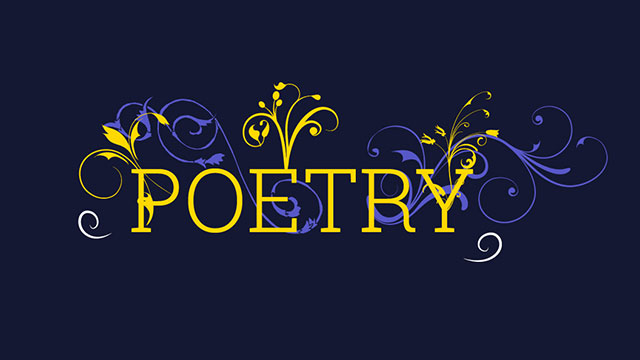Table of Contents
POETRY AND GEOGRAPHY
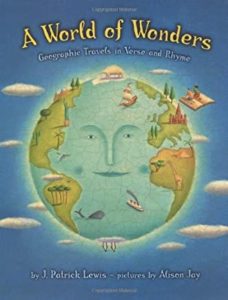
|
J. Patrick Lewis’s A World of Wonders (Dial, 2002) is a catchy and informative collection of poems about geography, illustrated with colorful crackle-patterned pictures reminiscent of old maps. Included are poems about explorers Columbus and Magellan, “Is the Yellow Sea Yellow?” (yes), “How Will a Cave Behave?” (includes a useful mnemonic about stalactites and stalagmites), and “One Square Foot Per Person, Please,” an unforgettable take on the world’s population. For ages 5 and up. |

|
Selected by Lee Bennett Hopkins, My America: A Poetry Atlas of the United States (Simon & Schuster, 2000) is a collection of 50 poems by 40 different poets, grouped by geographical region. Included with each geographical section is a colorful map and a page of state facts. For ages 7 and up. |
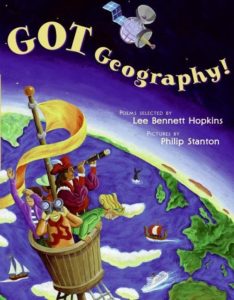
|
Also selected by Hopkins, Got Geography (Greenwillow Books, 2006) is an illustrated collection of 16 poems pertaining to world geography. Titles include “Mapping the World,” “If I Were the Equator,” “Awesome Forces,” “Early Explorers,” and “Compass.” For ages 7-12. |
| At the PoemHunter website, see The Map, a poem by Elizabeth Bishop. | |
| The Poetry Atlas is in the process of “Mapping the World in Poetry.” Click on a site on the world map for a poem about that place. |
POETRY AND SCIENCE
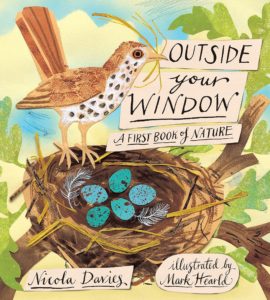
|
Nicola Davies’s Outside Your Window (Candlewick, 2012), illustrated with gorgeous paper collages by Mark Hearld, is a collection of 50 poems about nature, categorized by season, for ages 3-10. |
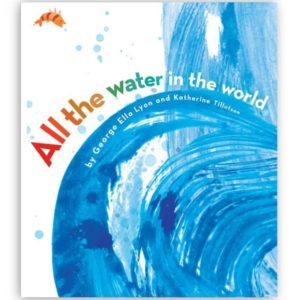
|
George Ella Lyon’s All the Water in the World (Atheneum/Richard Jackson Books, 2011) is a poetic introduction to the water cycle with collage-style illustrations by Katherine Tillotson. For ages 4-7. |
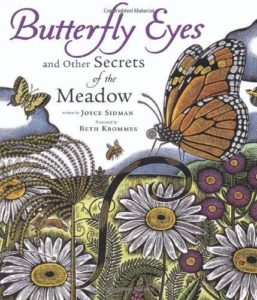
|
Joyce Sidman’s Butterfly Eyes and Other Secrets of the Meadow (Houghton Mifflin, 2006) is a collection of riddling poems about the denizens of fields and meadows, illustrated with beautiful colored scratchboard scenes. Facing pages give the answer to each poetic riddle and provide scientific background information. For ages 5-10. |
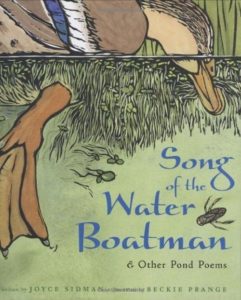
|
Also see Sidman’s other poetry collections celebrating ecosystems, among them Song of the Water Boatman and Other Pond Poems (Houghton Mifflin, 2005) and Dark Emperor and Other Poems of the Night (Houghton Mifflin, 2010). |
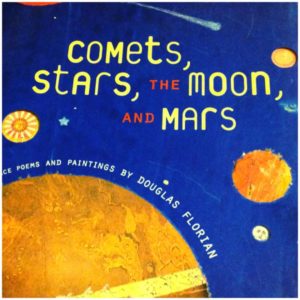
|
Douglas Florian’s thematic collections of poems include many on science topics, among them In the Swim (Sandpiper, 2001), Insectopedia (Sandpiper, 2002), On the Wing (Sandpiper, 2000), Mammalabilia (Sandpiper, 2004), Lizards, Frogs, and Polliwogs (Sandpiper, 2005), Comets, Stars, the Moon, and Mars (Harcourt Children’s Books, 2007), and Poetrees (Beach Lane Books, 2010). Illustrated with terrific paintings. For ages 5-10. |
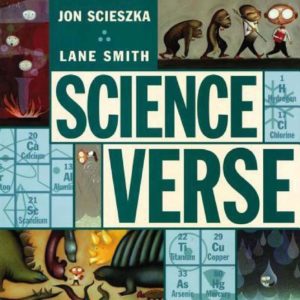
|
In Jon Scieszka and Lane Smith’s Science Verse (Viking Juvenile, 2004), the protagonist is zapped with the curse of SCIENCE VERSE when his science teacher offhandedly announces “You know, if you listen closely enough, you can hear the poetry of science in everything.” Now all science concepts appear in the form of hysterical parodies on classic poems – twisted scientific takes on Joyce Kilmer’s “Trees,” Edgar Allan Poe’s “The Raven,” “Jabberwocky,” “Casey at the Bat” (here, it’s about the scientific method, not baseball), and – well, guess this one: “Astronaut Stopping By a Planet on a Snowy Evening.” For ages 7-10. |
| From the Poetry Foundation, Ten Poems to Get You Through Science Class has selections by William Carlos Williams, Walt Whitman, Richard Brautigan, Christina Rossetti, and more, all with discussion questions. | |
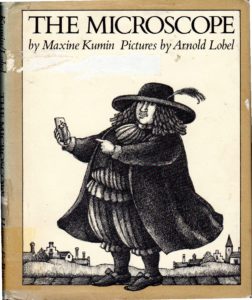 |
Read Maxine Kumin’s (funny) poem The Microscope online. |
